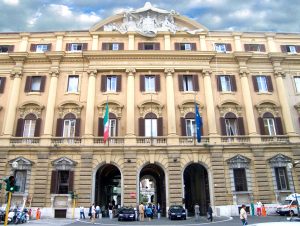As a Horizon 2020 project, we are working on “the Interlink Innovation universe” from different perspectives, such as technical and social points of view. Both are related to the emerging economy (platform economy, social economy, shared economy, etc.), its actors (prosumers, stakeholders), its co-productive, co-exploitation, co-marketing tools, and methodologies.
First of all: we can easily imagine technical and technological innovation as we are experiencing the digital era. But, secondly, we have to define social innovation, which has different meanings. It can describe a socialized innovation that creates new technical knowledge or social innovation, which is an approach pragmatic to social problems and applies managerial techniques to solve problems in the present, without paying much attention to ideological horizons or political correctness.
Social innovation also involves the use of new technologies and especially new organizational forms, where the bottom-up organizations coexist with network sociality, and where the social relations become instruments to be mobilized in business. We are witnessing that differences in working life, political and private life are going to disappear.
The OECD and the LEED Programme (Local Economic and Employment Development), drafted social innovation that can concern conceptual, process, or product change, organizational change, and changes in financing, and can deal with new relationships with stakeholders and territories. Social innovation seeks new answers to social problems by:
- Identifying and delivering new services that improve the quality of life of individuals and communities.
- Identifying and implementing new labour market integration processes, new competencies, new jobs, and new forms of participation, as diverse elements that each contribute to improving the position of individuals in the workforce.
What is social innovation?
Social innovations can therefore be seen as dealing with the welfare of individuals and communities, both as consumers and producers. The elements of this welfare are linked with their quality of life and activity. Wherever social innovations appear, they always bring about new references or processes. Social innovation deals with improving the welfare of individuals and community through employment, consumption or participation, its expressed purpose being therefore to provide solutions for individual and community problems.
Social innovation seeks new responses to social problems by identifying and directing new services that improve the quality of life of individuals and communities, all this identifying and implementing new processes of market integration of work, new skills, new jobs and new forms of participation, different elements that together help to improve the position of individuals.
NESTA defines social innovations explicitly aimed at the public and social good. This is innovation inspired by the desire to meet real needs which may be overlooked by the logic of the private market and public services. Social innovations may take place inside or outside public issues. They may be developed by the public, private or tertiary bodies, or by users and community: finally, innovation cannot be defined as social if it does not take on societal challenges.
Starting from social innovation and thanks to technological innovation, communities all around the world are testing new strategies to tackle ancient and present challenges. Different contexts, actors, paradigms converge on a new type of economy that combines some past elements with fresh innovations. We define it as a social economy because it has distant characteristics from those based on the production and consumption of goods. Its pillars include:
- The strong use of branched networks to support and manage relationships, helped by every possible form of communication;
- The blurred boundaries between production and consumption;
- The emphasis given to complexity, circular collaboration, care, and maintenance rather than to a linear, single-use pattern of behavior;
- A strong role of vision, mission, values, and objectives.
Indeed social economy distinctive features can be represented by:
- Technology: the creation of global information infrastructure, and the increasing importance of physical and digital social networks
- A field closely linked to culture and values, that is the growing emphasis on the human dimension, the putting individuals on the first spot, framing environmental, social, and economic systems and structures.
The social economy has largely formed around distributed systems rather than centralized structures. It deals not through simplifications and standardizations imposed by the centre, but distributing complexity to the margins, finally to consumers. The role of the consumer has shifted from being passive to turning into an active subject, also a creator of his own rights, solutions, and satisfaction.
Starting from this context, the Interlink project is navigating technological and social innovation, to create not only new technological “products” but a new way of creating and delivering public services through the collaboration of PAs, enterprises, and citizens.





